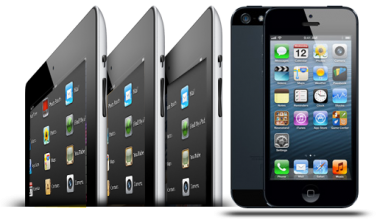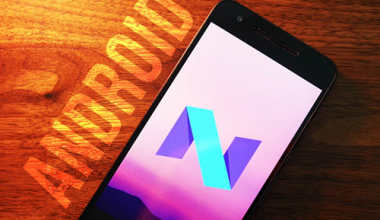Android’s smartphone army is at least 20 phones strong, plus a ragtag rear guard of e-book readers, tablets and set-top boxes.
But those oddball devices bringing up the rear are running into an unexpected challenge: neglect by Google.
Android had been created by Google as an operating system for all mobile devices, not just smartphones. The Open Handset Alliance, a consortium of companies that support Android, includes gadget makers that are not just focused on making smartphones. Yet, the search giant has been treating other gadgets running Android as second-class citizens, denying them their own centralized app store and dragging its feet on putting in place a framework that would allow developers to easily create apps for these devices.
“Today Google is 100 percent focused on smartphones,” says Kevin Kitagawa, the director of strategic marketing for MIPS Technologies, whose processor architectures are used for home-entertainment and networking devices. “Their compatibility tests only allow certification for these type of devices but we hope soon that Google will extend its support to other Android devices.”
Though Android is free and open source, Google exercises control over what devices can access the Android Market’s applications and receive extensive developer support. And, currently, only smartphones running Android qualify.
That leaves other devices out in the cold. Take Spring Design’s Alex e-reader: The Alex runs Android and will start shipping next month, but the device hasn’t been certified by Google, and so it will have no access to the Android Market.
Spring CEO Priscilla Lu says she’s confident Google will certify the Alex once the e-reader has gone through a few changes. “We will get the certification as soon as the cellular connection is enabled,” says Lu. “The difficulty is in getting the cellular module approved by the FCC.”
“The Alex is really a smartphone with E Ink,” says Lu.
Not so fast.
Google requires “all hardware components have the same software APIs as defined in their SDK to be compatible,” says Kitagawa. “This provides consistency to third-party developers that access these components,” he says.
That means devices always need to have some key components, such as touchscreens with a specified minimum resolution, a certain number of navigation keys, Wi-Fi, camera and accelerometer. Devices such as the Alex e-reader or a digital picture frame don’t conform to these requirements.
“What Google has is a set of hardware requirements, down to the number of buttons and resolution of the screens,” says Al Sutton, who runs a company called FunkyAndroid that offers app stores for Android devices that are not supported by Google. “Anyone can put Android on their device but at this point, if it’s not a smartphone they can’t pass the certification test that will let them into the app store.
In late 2007, Google unveiled the Android as a Linux-based, free, open source operating system for mobile devices that can be adopted by any hardware manufacturer. The announcement opened the doors for many major electronics manufacturers that were looking to create new devices but wanted an operating system that would go beyond the traditional Linux or Windows. Among those are Dell, whose upcoming tablet, the Mini 5 will run Android.
Separately, Google announced Chrome OS, another Linux-based operating system targeted at netbooks, PCs and other devices. Both Android and Chrome OS would allow developers to create apps for the platform but Google has never made it clear what kind of devices should run which operating system, Chris Hazelton, research director, mobile and wireless with the 451 Group.
That means many consumer electronics makers rushed to put Android on their devices, largely because Android came out long before Chrome was even on the radar screen.
“At this point, I am not clear where Android ends and Chrome OS begins,” says Hazelton. “I hope Google is having conversations with device vendors and they are mapping out where each OS has the advantage and how they are going to build an ecosystem of developers to create apps for both.”
MIPS and other companies say Google is trying to do that, but its attention has been divided and progress has been slow. So far, Google has offered certification tests to ensure compatibility only for Android-based smartphones and Google’s Android Market app store remains limited to smartphones.
As a result, last year, a group of 40 companies, mostly manufacturers from Japan, created the Open Embedded Software Foundation. The Foundation aims to create standardized development platforms for Android in consumer devices beyond the mobile phone, which would allow for proliferation of apps for set-top boxes and TVs.
“You are going to to see applications that are really tailored for the living room,” says Kitagawa. “We are talking of apps that can be accessed through a remote control and optimized for large screens.”
A few app developers such as Home Jinni, an app for set-top boxes and TVs that run Android, are trying to pass Google’s compatibility tests, anyway. Home Jinni is a media-center software based on open standards that collects content from different sources such as the web and peer-to-peer networks and offers support for voice applications.
Shidan Gouran, CEO of Home Jinni, says though the Android Market in its current form doesn’t have a place for his app, he is confident Google won’t keep the doors shut on gadgets other than smartphones for too long.
For now, Gouran is inking deals individually with companies like MIPS to put the Home Jinni app on devices. Meanwhile, he’s also created a version of the Home Jinni app for the Android Market so it can reach more users.
“The Android app store is not there yet for apps created for TVs, but I am pretty confident Google wants a piece of that market so it will make a place for us soon,” says Gouran.
Google declined to comment for this story.
Read More http://www.wired.com/gadgetlab/2010/03/android-devices-crave-googles-attention/#ixzz0jYb1Pteg
Resource:
http://www.wired.com/gadgetlab/2010/03/android-devices-crave-googles-attention/




